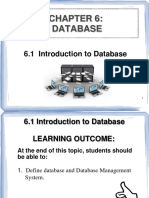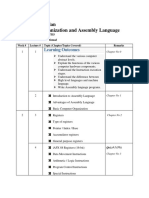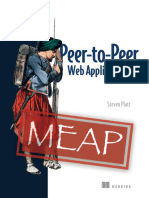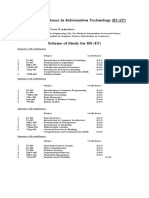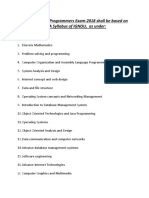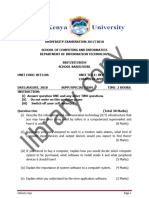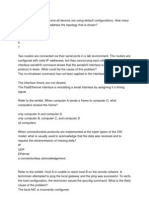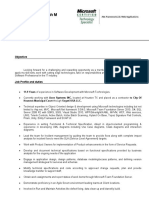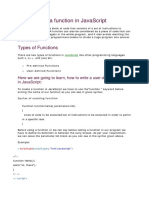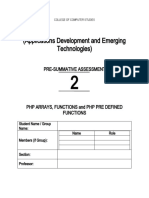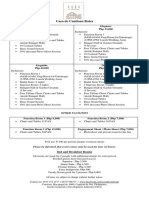0% found this document useful (0 votes)
317 views2 pagesPROGRAMING Paradigms
The document discusses two main programming paradigms: imperative and declarative. Imperative programming focuses on step-by-step instructions to change a machine's state, while declarative programming defines the desired result without specifying how to achieve it. Some examples of imperative paradigms are procedural programming, object-oriented programming, and parallel processing. Declarative paradigms include logic programming using facts and clauses, functional programming using mathematical functions, and database programming focused on data movement.
Uploaded by
djakate kadjaCopyright
© © All Rights Reserved
We take content rights seriously. If you suspect this is your content, claim it here.
Available Formats
Download as PDF, TXT or read online on Scribd
0% found this document useful (0 votes)
317 views2 pagesPROGRAMING Paradigms
The document discusses two main programming paradigms: imperative and declarative. Imperative programming focuses on step-by-step instructions to change a machine's state, while declarative programming defines the desired result without specifying how to achieve it. Some examples of imperative paradigms are procedural programming, object-oriented programming, and parallel processing. Declarative paradigms include logic programming using facts and clauses, functional programming using mathematical functions, and database programming focused on data movement.
Uploaded by
djakate kadjaCopyright
© © All Rights Reserved
We take content rights seriously. If you suspect this is your content, claim it here.
Available Formats
Download as PDF, TXT or read online on Scribd
/ 2




